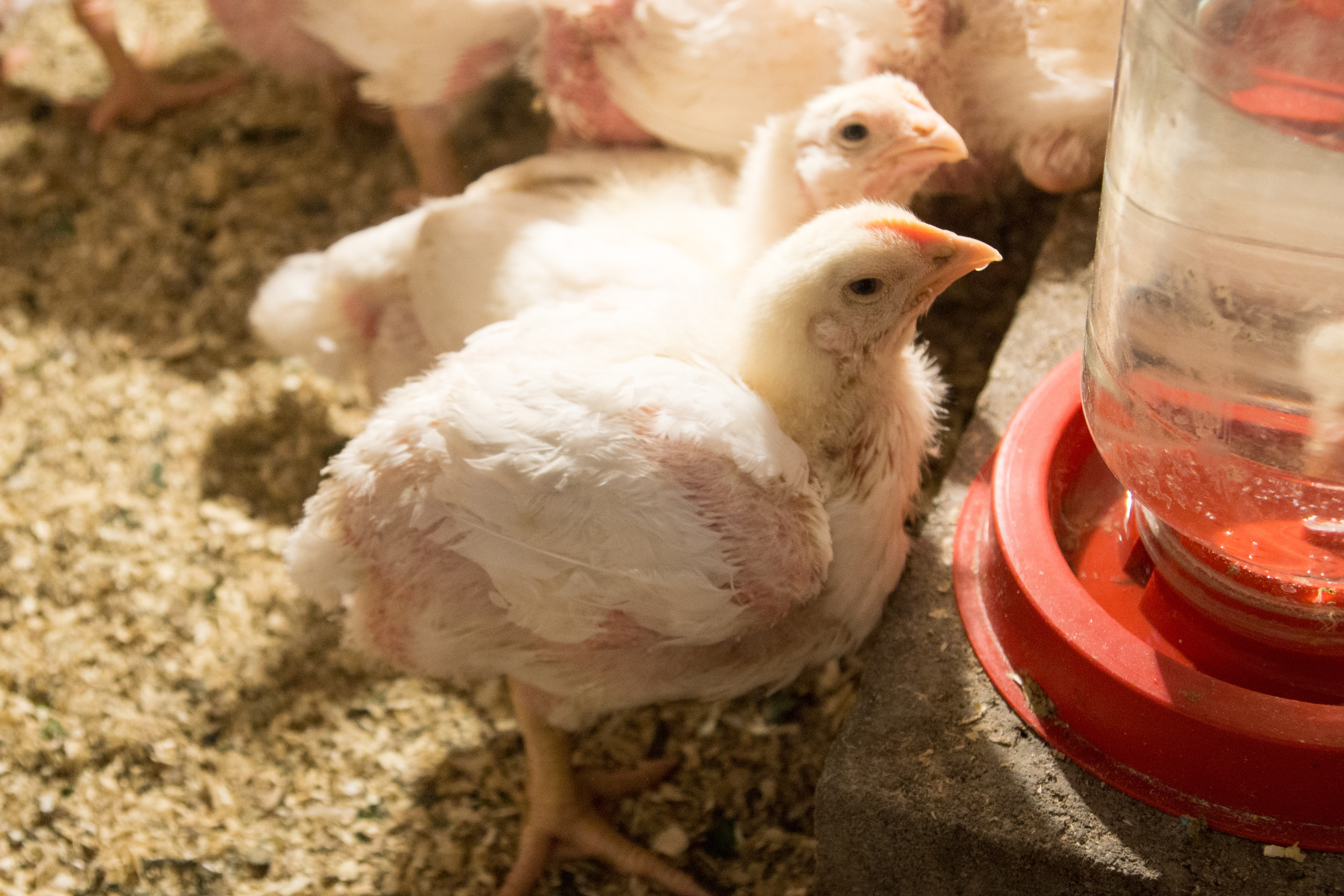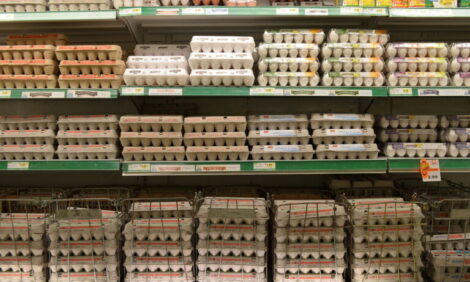



Are organic poultry farms more sustainable than conventional farms?
There are conflicting opinions over which farming system delivers the most sustainable method of poultry farming – and much of this is due to the many different definitions of “sustainable".When comparing the sustainability of conventional and organic poultry farming systems, most people will have an opinion on which approach they think is better. Some may view the impressive efficiency of conventional indoor systems as more sustainable in terms of optimised output and business practice, while some may view the “naturalness” of organic systems as best for the environment and thus more sustainable from the point of view of ecology and resource management. However, the findings of a recent study suggest that neither is clearly better than the other, and the solution may lie in combining the best aspects of both systems (Animal (2017), 11:10, pp 1839–1851).
Determining the sustainability of a farming system is a complex procedure. Not only must the researchers consider the impacts of each system on the environment and animal welfare, but also the impacts on economic indicators, productivity and public health throughout the entire production chain.
According to the researchers who conducted the study, a system can be considered sustainable if “the current generation can have its needs met without compromising the ability of future generations to have their needs met.” The definition of what organic poultry farming means in practice varies between different countries, but it will generally require the birds to have outdoor access, low stocking densities, an organic diet and alternative treatment methods for disease that do not use chemicals. Laying hens are also not permitted to be beak trimmed. A brief comparison between the sustainability of organic and conventional poultry production systems, as determined by the study, is presented in Table 1.
|
Aspect of sustainability |
Organic vs conventional poultry farms |
|
Environment |
Both systems had an equal environmental impact in terms of: Global warming potential (based on greenhouse gas emissions) Culling male chicks in the egg industry (waste) Organic systems had a greater environmental impact in terms of: Consistently lower productivity Higher potential for acidification and eutrophication (due to lower productivity) Higher land use Higher energy use (related to diet) Slower-growing broiler breeds are less feed efficient Organic systems had a lower environmental impact in terms of:
|
|
Animal welfare |
Organic systems had better animal welfare in terms of: Better leg health in broilers (due to slower-growing breeds) Improved stress resistance in broilers Organic systems had poorer animal welfare in terms of: High rates of worm infections High rates of feather pecking (birds are not beak trimmed) |
|
Productivity |
Organic systems had consistently lower productivity |
|
Economy |
Organic systems had better economic outcomes in terms of: Higher farm gate prices Higher farm income |
|
Public health |
Organic systems were safer in terms of:
Organic systems were less safe in terms of: Higher microbial contamination of broiler meat No difference in microbial contamination of eggs |
Table 1. Some of the main differences in sustainability between organic and conventional systems
It’s clear that rating a system as sustainable or not is no simple matter, and really depends on which aspects of sustainability are considered to be most important. Other studies have investigated the sustainability of organic farming and have concluded that organic farming can be somewhat sustainable, particularly in relation to the reduction in chemical use. However, there are very few studies that investigate all aspects of sustainability together and, as there are so many different ways of measuring sustainability, it can be difficult to compare these studies to get a consistent answer.

Many of the negative environmental impacts of organic farming stem from the reduced efficiency that occurs when slower-growing breeds are used for meat production, and when the birds are allowed to range outdoors. The additional energy required to explore, forage and thermoregulate reduces their feed conversion efficiency, meaning that more feed is required to achieve optimal live weights. However, these behaviours are beneficial for bird welfare, and the additional exercise is associated with better leg health in broilers.
While the reduced stocking densities and the ability to range outdoors are beneficial for bird welfare, this does not mean that organic systems are performing optimally in this regard. In general, the same welfare problems that exist in conventional free-range systems are present in organic systems. The rate of internal parasite infection is higher in organic systems, and there are fewer medical treatments available for producers to combat this issue. Much of the health management on organic farms tends to be preventive in nature, focusing on good hygiene and biosecurity rather than administering treatments.
A further welfare concern found on organic farms relates to feather pecking. Organic systems protect laying hens from the acute pain and mutilation of beak trimming by banning this practice. However, this can have long-term repercussions for hen welfare due to the increase in feather pecking that occurs for loose-housed flocks with intact beaks.
"An alternative method of improving the sustainability of organic farms would be to introduce mixed farming to these systems; this would involve adding another type of farming to the organic poultry operation, such as planting an orchard."
--
The authors of one study suggest that combining the best parts of organic and conventional systems may be a feasible means of improving sustainability. A hypothetical example in the poultry industry might involve compromising on the percentage of poultry feed that is required to be organic. Sourcing organic feedstuffs locally requires less transport, but also limits the variety of feed ingredients that are available to producers. This creates the potential for suboptimal nutrition and poor feed conversion in commercial organic poultry if not managed properly. By compromising and allowing a small percentage of the feed to be sourced from non-organic and/or non-local sources, the nutritional content of the feed can be optimised while still maintaining the majority of the benefits of organic feed production.
An alternative method of improving the sustainability of organic farms would be to introduce mixed farming to these systems; this would involve adding another type of farming to the organic poultry operation, such as planting an orchard. This would increase the amount of produce that could be grown on the same area of land, and the poultry could graze on the pasture, remove insects and provide fertiliser for the trees through their manure. While mixed-farming systems do not address all of the concerns associated with organic farming, a recent study did find that allowing broilers to range in an olive orchard created a more sustainable system than conventional free-range or an intensive indoor system (Rocchi et al, 2019).
Consumers buy organic for health reasons
Decisions by members of the public to support organic farming are made for a variety of reasons. Most consumers who purchase organic products do so for health considerations, led by the perception that organic eggs and poultry meat are healthier due to the lack of added chemicals or genetically modified feed ingredients. There are mixed views on whether organic poultry meat and eggs actually taste better, but the meat produced from organic broiler systems is usually of better quality. There is also the feel-good factor that people get from supporting local farmers and buying ethically sourced produce.
In conclusion, the topic of sustainability is a complex one and there is no simple answer regarding which production system is more sustainable for poultry. There are advantages and disadvantages to both, and any expression of preference for one over the other will depend on who is doing the assessment and where their priorities lie. However, the increasing popularity of organic poultry meat and eggs demonstrates that these farming systems are here to stay, and future research should investigate how to further improve their operation to ensure optimal bird welfare, sustainability and farm productivity.
| References | ||||
|---|---|---|---|---|
| Rocchi, L., Paolotti, L., Rosati, A., Boggia, A. and Castellini, C. | ||||
| (2019) | Assessing the sustainability of different poultry production systems: A multicriteria approach. Journal of Cleaner Production | 211 | ||
| Vaarst, M., Steenfeldt, S. and Horsted, K. | ||||
| (2015) | Sustainable development perspectives of poultry production. World's Poultry Science Journal | 71 (4) | ||
| Van Wagenberg, C.P.A., De Haas, Y., Hogeveen, H., Van Krimpen, M.M., Meuwissen, M.P.M., Van Middelaar, C.E. and Rodenburg, T.B. | ||||
| (2017) | Animal Board Invited Review: Comparing conventional and organic livestock production systems on different aspects of sustainability. Animal | 11 (10) |









